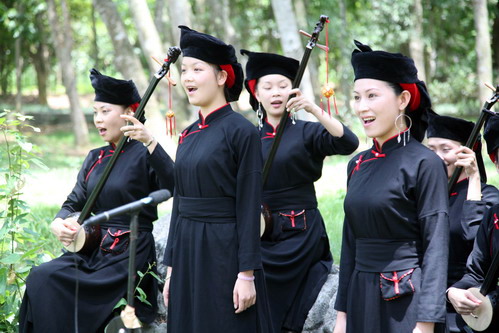|
Wikstroemia Monnula
''Wikstroemia monnula'' is a shrub in the family Thymelaeaceae. It is native to southern Anhui, Jiangxi, Guangdong, Guangxi Guangxi (; ; Chinese postal romanization, alternately romanized as Kwanghsi; ; za, Gvangjsih, italics=yes), officially the Guangxi Zhuang Autonomous Region (GZAR), is an Autonomous regions of China, autonomous region of the People's Republic ..., Guizhou, Hunan, and Zhejiang. Description The shrub grows from 0.5 to 0.8 m tall. Its branches are yellowish green and angular. It is often found on shrubby slopes and roadsides at altitudes of 600 to 1100 m. References monnula {{Thymelaeaceae-stub ... [...More Info...] [...Related Items...] OR: [Wikipedia] [Google] [Baidu] |
Thymelaeaceae
The Thymelaeaceae are a cosmopolitan family of flowering plants composed of 50 genera (listed below) and 898 species.Zachary S. Rogers (2009 onwards)A World Checklist of Thymelaeaceae (version 1) Missouri Botanical Garden Website, St. Louis. It was established in 1789 by Antoine Laurent de Jussieu.Antoine Laurent de Jussieu ''Genera Plantarum'', page 76. Herrisant & Barrois, Paris. The Thymelaeaceae are mostly trees and shrubs, with a few vines and herbaceous plants. Description This is not intended as a full botanical description, but only as a few notes on some of the conspicuous or unusual traits of the family when ''Tepuianthus'' is excluded. The bark is usually shiny and fibrous. Attempts to break the stem often result in a strip of bark peeling down the side.Ernst Schmidt, Mervyn Lotter and Warren McCleland The number of stamens is usually once or twice the number of calyx lobes. If twice, then they often occur in two well separated series. Exceptions include ''Gonystyl ... [...More Info...] [...Related Items...] OR: [Wikipedia] [Google] [Baidu] |
Anhui
Anhui , (; formerly romanized as Anhwei) is a landlocked province of the People's Republic of China, part of the East China region. Its provincial capital and largest city is Hefei. The province is located across the basins of the Yangtze River and the Huai River, bordering Jiangsu to the east, Zhejiang to the southeast, Jiangxi to the south, Hubei to the southwest, Henan to the northwest, and Shandong for a short section in the north. With a population of 63.65 million, Anhui is the 8th most populous province in China. It is the 22nd largest Chinese province based on area, and the 12th most densely-populated region of all 34 Chinese provincial regions. Anhui's population is mostly composed of Han Chinese. Languages spoken within the province include Jianghuai Mandarin, Wu, Hui, Gan and small portion of Zhongyuan Mandarin Chinese. The name "Anhui" derives from the names of two cities: Anqing and Huizhou (now Huangshan City). The abbreviation for Anhui is "" after the h ... [...More Info...] [...Related Items...] OR: [Wikipedia] [Google] [Baidu] |
Jiangxi
Jiangxi (; ; formerly romanized as Kiangsi or Chianghsi) is a landlocked province in the east of the People's Republic of China. Its major cities include Nanchang and Jiujiang. Spanning from the banks of the Yangtze river in the north into hillier areas in the south and east, it shares a border with Anhui to the north, Zhejiang to the northeast, Fujian to the east, Guangdong to the south, Hunan to the west, and Hubei to the northwest. The name "Jiangxi" is derived from the circuit administrated under the Tang dynasty in 733, Jiangnanxidao (; Gan: Kongnomsitau). The abbreviation for Jiangxi is "" (; Gan: Gōm), for the Gan River which runs across from the south to the north and flows into the Yangtze River. Jiangxi is also alternately called ''Ganpo Dadi'' () which literally means the "Great Land of Gan and Po". After the fall of the Qing dynasty, Jiangxi became one of the earliest bases for the Communists and many peasants were recruited to join the growing people's rev ... [...More Info...] [...Related Items...] OR: [Wikipedia] [Google] [Baidu] |
Guangdong
Guangdong (, ), alternatively romanized as Canton or Kwangtung, is a coastal province in South China on the north shore of the South China Sea. The capital of the province is Guangzhou. With a population of 126.01 million (as of 2020) across a total area of about , Guangdong is the most populous province of China and the 15th-largest by area as well as the second-most populous country subdivision in the world (after Uttar Pradesh in India). Its economy is larger than that of any other province in the nation and the fifth largest sub-national economy in the world with a GDP (nominal) of 1.95 trillion USD (12.4 trillion CNY) in 2021. The Pearl River Delta Economic Zone, a Chinese megalopolis, is a core for high technology, manufacturing and International trade, foreign trade. Located in this zone are two of the Chinese city tier system, four top Chinese cities and the List of Chinese prefecture-level cities by GDP, top two Chinese prefecture-level cities by GDP; ... [...More Info...] [...Related Items...] OR: [Wikipedia] [Google] [Baidu] |
Guangxi
Guangxi (; ; alternately romanized as Kwanghsi; ; za, Gvangjsih, italics=yes), officially the Guangxi Zhuang Autonomous Region (GZAR), is an autonomous region of the People's Republic of China, located in South China and bordering Vietnam ( Hà Giang, Cao Bằng, Lạng Sơn, and Quảng Ninh Provinces) and the Gulf of Tonkin. Formerly a province, Guangxi became an autonomous region in 1958. Its current capital is Nanning. Guangxi's location, in mountainous terrain in the far south of China, has placed it on the frontier of Chinese civilization throughout much of Chinese history. The current name "Guang" means "expanse" and has been associated with the region since the creation of Guang Prefecture in 226 AD. It was given provincial level status during the Yuan dynasty, but even into the 20th century, it was considered an open, wild territory. The abbreviation of the region is "" (Hanyu pinyin: ; Zhuang: ), which comes from the name of the city of Guilin, the provin ... [...More Info...] [...Related Items...] OR: [Wikipedia] [Google] [Baidu] |
Guizhou
Guizhou (; formerly Kweichow) is a landlocked province in the southwest region of the People's Republic of China. Its capital and largest city is Guiyang, in the center of the province. Guizhou borders the autonomous region of Guangxi to the south, Yunnan to the west, Sichuan to the northwest, the municipality of Chongqing to the north, and Hunan to the east. The population of Guizhou stands at 38.5 million, ranking 18th among the provinces in China. The Dian Kingdom, which inhabited the present-day area of Guizhou, was annexed by the Han dynasty in 106 BC. Guizhou was formally made a province in 1413 during the Ming dynasty. After the overthrow of the Qing in 1911 and following the Chinese Civil War, the Chinese Communist Party took refuge in Guizhou during the Long March between 1934 and 1935. After the establishment of the People's Republic of China, Mao Zedong promoted the relocation of heavy industry into inland provinces such as Guizhou, to better prot ... [...More Info...] [...Related Items...] OR: [Wikipedia] [Google] [Baidu] |
Hunan
Hunan (, ; ) is a landlocked province of the People's Republic of China, part of the South Central China region. Located in the middle reaches of the Yangtze watershed, it borders the province-level divisions of Hubei to the north, Jiangxi to the east, Guangdong and Guangxi to the south, Guizhou to the west and Chongqing to the northwest. Its capital and largest city is Changsha, which also abuts the Xiang River. Hengyang, Zhuzhou, and Yueyang are among its most populous urban cities. With a population of just over 66 million residing in an area of approximately , it is China's 7th most populous province, the fourth most populous among landlocked provinces, the second most populous in South Central China after Guangdong and the most populous province in Central China. It is the largest province in South-Central China and the fourth largest among landlocked provinces and the 10th most extensive province by area. Hunan's nominal GDP was US$ 724 billion (CNY 4.6 tri ... [...More Info...] [...Related Items...] OR: [Wikipedia] [Google] [Baidu] |
Zhejiang
Zhejiang ( or , ; , also romanized as Chekiang) is an eastern, coastal province of the People's Republic of China. Its capital and largest city is Hangzhou, and other notable cities include Ningbo and Wenzhou. Zhejiang is bordered by Jiangsu and Shanghai to the north, Anhui to the northwest, Jiangxi to the west and Fujian to the south. To the east is the East China Sea, beyond which lies the Ryukyu Islands. The population of Zhejiang stands at 64.6 million, the 8th highest among China. It has been called 'the backbone of China' due to being a major driving force in the Chinese economy and being the birthplace of several notable persons, including the Chinese Nationalist leader Chiang Kai-shek and entrepreneur Jack Ma. Zhejiang consists of 90 counties (incl. county-level cities and districts). The area of Zhejiang was controlled by the Kingdom of Yue during the Spring and Autumn period. The Qin Empire later annexed it in 222 BC. Under the late Ming dynasty and ... [...More Info...] [...Related Items...] OR: [Wikipedia] [Google] [Baidu] |
_close-up_(11421758284).jpg)





%2C_King_of_Wuyue.jpg)